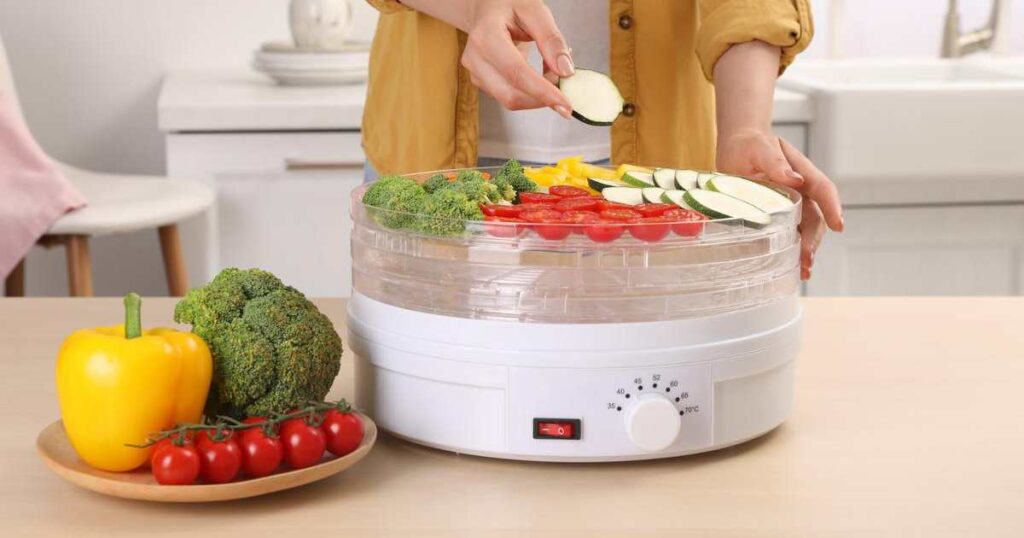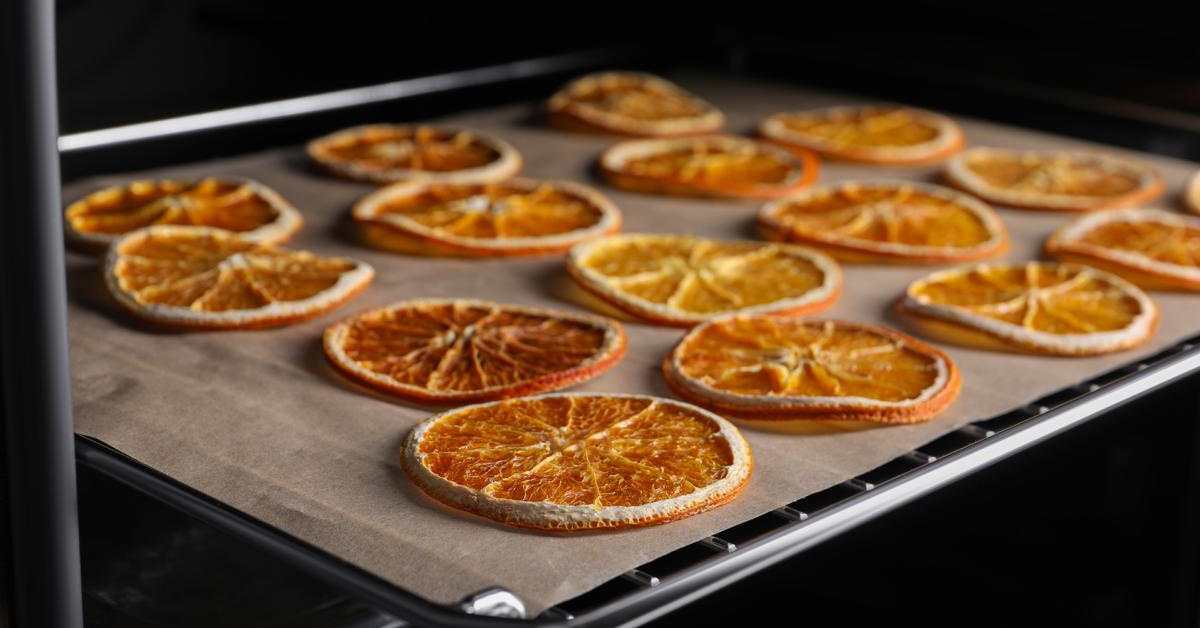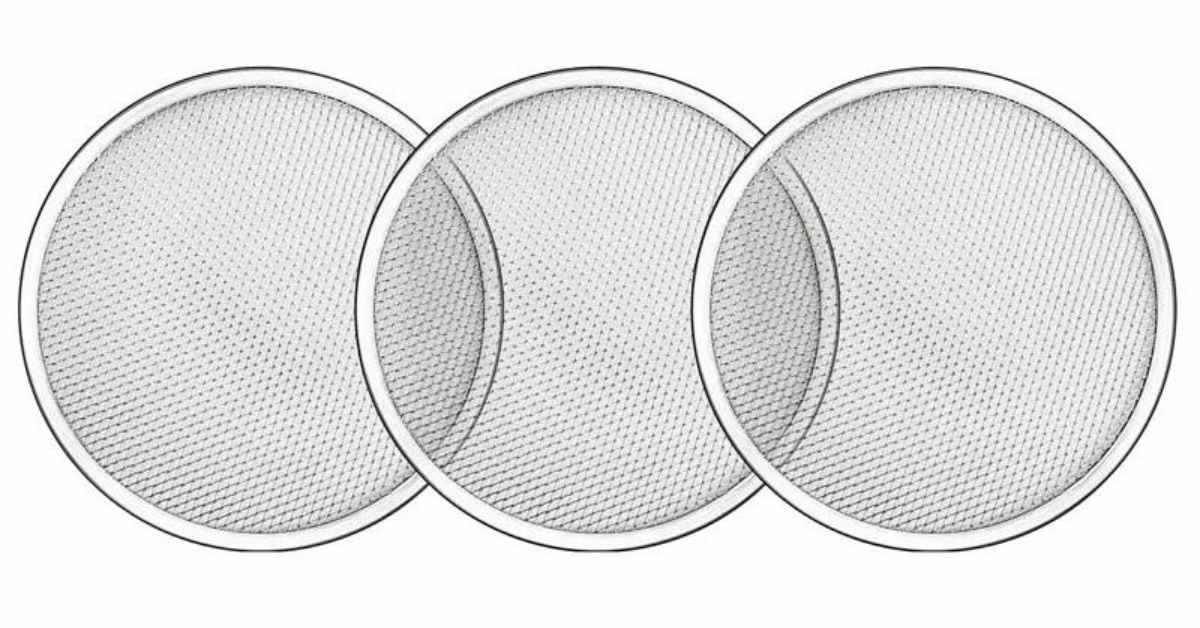The question often arises in food preservation and dehydration: “Can You Use Parchment Paper in a Dehydrator?” As of 2023, this query is about to be thoroughly addressed. Dehydrators have become a staple for those looking to preserve the flavours and nutrients of various foods. Still, the role of parchment paper in this process remains a subject of curiosity.
This article will delve into the intricacies of using parchment paper within a dehydrator, providing a comprehensive answer to this culinary conundrum. Whether you’re a seasoned dehydrating enthusiast or a newcomer to the practice, read on to discover the insights you need to make informed decisions about your food dehydration journey.
Table of Contents
ToggleWhat is a Dehydrator

A dehydrator is a kitchen appliance designed to remove moisture from various foods to extend their shelf life while retaining their flavours and nutritional value. Operating on the controlled heat and airflow principle, a dehydrator gradually reduces the moisture content of foods such as fruits, vegetables, herbs, and even meats.
Doing so prevents the growth of bacteria, yeast, and mold that can cause spoilage. Dehydrators consist of trays or shelves on which the food is arranged in a single layer for even drying.
The device’s adjustable temperature settings and consistent airflow ensure the food’s moisture is effectively evaporated, resulting in concentrated flavors and a lightweight, portable end product.
Whether you’re a health-conscious individual or an outdoor enthusiast, a dehydrator can become an indispensable tool in your culinary arsenal.
Can You Use Parchment Paper in a Dehydrator
The answer is yes, you can use parchment paper in a dehydrator, but with some considerations. Parchment paper, known for its non-stick properties, can be a helpful accessory when dehydrating certain foods.
It provides a barrier between the food and the dehydrator trays, preventing sticky or small pieces from falling through the grates. This can be particularly useful when working with small fruits, herbs, or items like granola.
However, there are a few points to bear in mind. The parchment paper should cover only some of the tray surface, as it might impede proper airflow, leading to uneven drying. Instead, cut the parchment paper to fit the tray with a slight gap around the edges.
Additionally, parchment paper is not heat-resistant like the silicone sheets often provided with dehydrators. Thus, monitoring the parchment paper closely is crucial to ensure it doesn’t brown, warp, or affect the drying process.
How to Use Parchment Paper in a Dehydrator
Parchment paper in a dehydrator requires a simple yet mindful approach to ensure adequate drying and optimal results. Here’s a step-by-step guide on how to use parchment paper in your dehydrator:
Prep the Parchment Paper: Cut the parchment paper to fit the dehydrator tray, leaving a small gap around the edges to allow proper airflow. Ensure the paper only covers part of the tray surface, hindering even drying.
Arrange the Food: Place your items on the parchment paper in a single layer. Whether you’re dehydrating fruits, vegetables, or herbs, ensure that they’re evenly spaced and not overcrowded. This allows for efficient airflow and consistent drying.
Monitor Drying Times: Keep a close eye on the drying process, as parchment paper might affect the drying time slightly. Check the manufacturer’s recommended drying times for specific foods and adjust as needed.
Rotate Trays: If your dehydrator has multiple trays, consider rotating them during drying. This helps ensure uniform drying, especially if there are variations in moisture content between different trays.
Check Parchment Paper Condition: Periodically inspect the parchment paper for any signs of browning, curling, or warping. If you notice any issues, you can gently adjust the paper to prevent it from interfering with the drying process.
Complete the Drying Process: Once your food has reached the desired level of dehydration, carefully remove the parchment paper from the trays. Transfer the dried items to a storage container, ensuring they are completely cooled before sealing to prevent moisture buildup.
By following these steps, you can harness the benefits of parchment paper in your dehydrator without compromising the quality of your dehydrated foods.
What Are the Benefits of Using Parchment Paper in a Dehydrator
Using parchment paper in your dehydrator can offer several advantageous outcomes for both your dehydrating process and the results of your culinary endeavors. Here are the key benefits of incorporating parchment paper into your dehydrating routine:
Prevents Sticking: Parchment paper’s non-stick nature acts as a protective barrier between your food and the dehydrator trays. This is particularly beneficial for foods prone to sticking, like small fruits, purees, or items with high sugar content.
Easy Cleanup: Cleaning your dehydrator trays becomes a breeze with parchment paper in place. You’ll spend less time scrubbing away residue and can focus more on enjoying your dehydrated creations.
Maintains Food Integrity: Delicate items such as herbs or small fruits can be challenging to remove from the trays without causing damage. Parchment paper ensures that your food retains its shape, texture, and appearance throughout drying.
Minimizes Tray Contamination: Parchment paper helps prevent cross-contamination between food items on the same tray. This is especially useful when dehydrating foods with distinct flavors or aromas.
Enhances Versatility: Using parchment paper, you can confidently dehydrate a broader range of foods, including those you might have hesitated to try without this added layer of protection.
Reduces Waste: Parchment paper can extend the life of your dehydrator trays by preventing food residue from accumulating over time. This can lead to fewer tray replacements and less environmental impact.
Convenient Handling: When your dehydrated foods are ready, you can lift the parchment paper with the dried items intact. This makes it easy to transfer the food to storage containers or prepare them for various culinary applications.
Incorporating parchment paper into your dehydrating process presents many advantages that contribute to smoother operations, better results, and a more enjoyable overall experience.
Risks and Concerns of Using Parchment Paper in a Dehydrator
While parchment paper can be a helpful tool in dehydrating, it’s essential to be aware of potential risks and concerns when using it in a dehydrator. Here are some factors to consider before incorporating parchment paper into your drying routine:
Uneven Airflow: Improper placement or excessive parchment paper coverage can disrupt the dehydrator’s airflow. This can lead to rough drying, resulting in some parts of your food being over-dried while others still need to be under-dried.
Extended Drying Time: Parchment paper may slightly extend the drying time of your foods due to its insulating properties. It’s advisable to keep a close eye on the drying process and adjust the timing as needed.
Potential Browning: Parchment paper can brown when exposed to high temperatures, which might affect the appearance and taste of your dehydrated foods. Monitoring the parchment paper’s condition throughout the process can help mitigate this concern.
Limited Heat Resistance: Parchment paper has limited heat resistance, unlike silicone sheets designed explicitly for dehydrators. Using it for extended periods or very high temperatures could compromise its integrity and potentially release harmful chemicals.
Warping and Curling: Parchment paper can warp or curl at the edges when subjected to heat and moisture. This might impact the effectiveness of the barrier it provides between the food and the trays.
Environmental Impact: Regular use of disposable parchment paper may contribute to increased waste generation. Consider reusable alternatives like silicone sheets or non-stick mats for a more eco-friendly approach.
Trial and Error: Achieving the right balance between parchment paper usage and effective drying might require some experimentation. You may need to adjust the parchment paper’s size, placement, and quantity to find what works best for different foods.
While parchment paper can offer benefits in a dehydrator, addressing the potential risks and concerns associated with its use is essential.
Alternatives to Using Parchment Paper in a Dehydrator
If you’re seeking alternatives to using parchment paper in your dehydrator, several options can provide similar benefits without the potential drawbacks. Consider these alternatives to ensure adequate drying and preserve the quality of your dehydrated foods:
Silicone Sheets:
Silicone sheets are explicitly designed for dehydrators and offer non-stick properties similar to parchment paper. They can withstand higher temperatures and extended use, making them a durable and heat-resistant choice.
Non-Stick Mats:
Non-stick mats made from materials like Teflon or fiberglass are another viable option. These mats provide a smooth surface for your foods to rest on while facilitating even drying. They are reusable and can be easily cleaned for multiple uses.
Mesh Screens:
Mesh screens or trays designed for dehydrators are particularly suitable for foods that might fall through grates. These screens allow for optimal airflow and prevent sticking while maintaining the integrity of the drying process.
Direct Placement:
Placing certain foods directly on the dehydrator trays without additional lining can work well. This method best suits items that don’t stick easily or those with higher moisture content requiring longer drying time.
Oil Sprays:
Lightly coating dehydrator trays with a thin layer of cooking oil or non-stick spray can help prevent sticking without affecting the drying process. However, be cautious not to overapply, as excess fat can lead to uneven drying.
Reusable Fabric Sheets:
Some eco-friendly options include reusable fabric sheets made from silicone-coated fabric or food-grade silicone. These sheets offer a sustainable alternative to disposable parchment paper.
Exploring these alternatives allows you to tailor your approach based on the foods you’re dehydrating and your preferences for ease of use, sustainability, and performance.
Tips for Successful Dehydrating
Achieving optimal results in dehydrating endeavors requires a blend of technique and attention to detail. Here are some essential tips to ensure successful and satisfying outcomes:
Uniform Slicing: Cut your food items into uniform sizes to ensure even drying. This prevents some pieces from becoming overly dried while others are still moist.
Proper Spacing: Arrange items on dehydrator trays with adequate space between them. Proper spacing allows for efficient airflow and prevents overlapping, which can hinder drying.
Consistent Thickness: Maintain a uniform thickness for each slice or piece. Thicker pieces may take longer to dry, while fragile ones could become brittle.
Monitor Temperature: Follow recommended temperature guidelines for specific foods. Too high a temperature can result in uneven or over-drying, while too low might prolong the process excessively.
Rotate Trays: If your dehydrator has multiple trays, rotate them periodically to ensure even drying across all levels.
Check Dryness: Regularly check the dryness of your food. It should be dry to the touch and pliable, without moisture remaining in the center.
Cool Before Storing: Allow dehydrated items to cool completely before storing them in airtight containers. This prevents condensation and helps maintain their crispness.
Label and Date: Label your stored items with the type of food and the date of dehydration to track freshness and usage.
Experiment: Don’t hesitate to experiment with different flavors, marinades, or seasonings to create unique and delicious dehydrated snacks.
Practice Patience: Dehydrating is a gradual process. Patience is critical to achieving the best results while preserving flavors and nutrients.
By incorporating these tips into your dehydrating routine, you’ll be well-equipped to produce a variety of delectable and nutritious dried foods that cater to your preferences and culinary creativity.
Cleaning and Maintenance of a Dehydrator
Maintaining a clean and well-functioning dehydrator is essential for optimal performance and the longevity of your appliance. Here’s a brief guide to cleaning and preserving your dehydrator:
Regular Cleaning: Remove trays and wash them with warm, soapy water after each use. Wipe down the interior of the dehydrator with a damp cloth to remove any residue.
Dismantle and Wash: Disassemble removable parts, such as trays and mesh screens, for thorough cleaning. Pay attention to crevices where food particles might accumulate.
Dehydrate Spills: Clean them promptly to prevent sticky buildup if spills or drips occur during drying. Dehydrate a plain paper towel on the lowest setting to absorb excess moisture.
Air Drying: Ensure all components are dehydrated before reassembling the dehydrator. Proper drying prevents mold growth and preserves the quality of your appliance.
Deep Cleaning: Periodically, give your dehydrator a deep cleaning. Remove any accumulated dust or debris from the fan and heating elements. Refer to the manufacturer’s instructions for safe disassembly and cleaning methods.
Exterior Care: Wipe the exterior of the dehydrator with a damp cloth to remove any dust or spills. Avoid using abrasive cleaners that could damage the surface.
Storage: Store your dehydrator in a dry, well-ventilated area when not in use. This prevents moisture buildup and prolongs the appliance’s lifespan.
By following these cleaning and maintenance tips, you can ensure that your dehydrator remains in top condition, delivering consistent and reliable results every time you use it.
Conclusion
In food preservation, the question of whether parchment paper can be used in a dehydrator has been explored in depth. As of 2023, parchment paper can be a valuable ally in dehydrating, offering benefits like preventing sticking and facilitating cleanup.
However, its usage requires careful consideration of factors such as airflow and temperature. Exploring alternatives and understanding potential risks ensures your dehydrating journey is seamless and successful.
By embracing the tips for successful dehydrating and mastering proper cleaning and maintenance, you’ll be equipped to enjoy a world of flavorful and nutrient-rich dried foods that enhance your culinary repertoire.
FAQs
Is Parchment Paper Safe in a Dehydrator?
Yes, parchment paper is generally safe for dehydrators but requires careful usage. Cut it to fit the trays with proper spacing to allow for airflow, and monitor it during the drying process to prevent browning or warping.
What Do You Line Dehydrator Trays With?
You can line dehydrator trays with alternatives like silicone sheets, non-stick mats, or mesh screens. These options provide non-stick properties and promote efficient drying without impeding airflow.
Does Parchment Paper Hold in Moisture?
Parchment paper is breathable and won’t hold in moisture like plastic wrap. It allows for some airflow, which is essential for effective dehydration.
Can You Put Silicone in a Dehydrator?
Yes, silicone sheets are safe to use in a dehydrator. They are designed for high temperatures and offer non-stick properties, making them suitable for efficient drying.
What Happens If Parchment Gets Wet?
If parchment paper gets wet, it can become weakened and more prone to tearing or breaking. Wet parchment paper might also affect the food’s drying process, potentially leading to uneven results. It’s advisable to handle parchment paper with care and ensure it remains dry during use.






